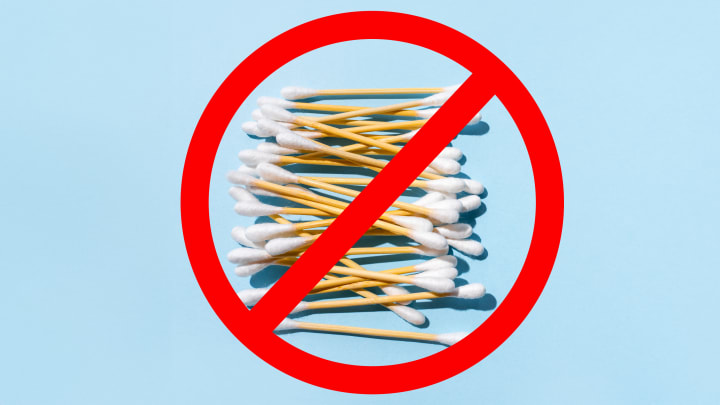6 Ways to Clean Your Ears Without Cotton Swabs
By Zoe Weiner

As the old saying goes, “You shouldn’t put anything in your ears smaller than your elbow.” And that includes Q-Tips and cotton swabs.
The cotton swabs that most of us use to clean wax out of our ears are a lot more harmful than helpful. When you put a Q-tip in your ear, it actually ends up pushing most of the wax deeper into the canal instead of digging it out the way it’s supposed to. The wax then sits up against your ear drums and prevents them from vibrating properly, which can cause hearing problems. And if you dig too deep, you can actually wind up puncturing your ear drum, which is not only traumatizing, it can have serious long-term effects on your hearing.
As gross as it sometimes seems, it’s important to understand that having earwax is actually a good thing. The wax helps lubricate our ear canals to keep them functioning properly, keeps bugs from crawling inside our ears, and prevents fungus from growing around our ear drums—situations that are all a lot worse than the earwax itself.
Ears are pretty good at cleaning themselves on their own, but if you do feel like they need a little extra help, here are six alternative methods for getting wax out of your ears without a Q-tip.
1. Try the finger and tissue trick.
No Q-tip? No problem! If you haven’t let things get really backed up inside your ears (as in, it’s not hard and crusty in there), all you need to do is cover your pinky finger with a tissue and wiggle out the wax gently. Again, stick to the outer part of the ear and avoid jamming your pinky into your ear canal. This is most effective post-shower because the warm water helps soften the wax and makes it easier to move.
2. Add some hydrogen peroxide ...
Lie down on your side and squeeze a few drops of hydrogen peroxide into your sky-facing ear. Don’t let the fizzing and popping noises freak you out—that means it’s working. Let it sit for a few minutes, then tilt your head into the sink or a bowl to drain the remaining solution and the wax it dislodged out of your ear. (That said, according to one expert, you might want to avoid it if you have dry skin because it can make your skin even drier.)
3. ... Or olive oil.
Who would have guessed everyone’s favorite kitchen staple could double as an ear cleaner? According to the American Hearing Research Foundation, adding two to three drops of olive oil into your ear can help soften ear wax so that it can work its way out. This procedure likely only needs to be performed once a week, but it won’t harm your ears to do it daily. Mineral oil will also work.
4. Turn to earwax drops.
If the DIY stuff isn’t for you (or if the idea of putting olive oil in your ears just grosses you out), solutions like Debrox earwax removal drops are available over the counter at the pharmacy and can help soften the wax to make it easier to remove with a tissue.
5. Use a special tool.
Consider picking up the Oto-Tip ($50), which rotates gently within your ear to loosen up the wax instead of pushing it in even deeper. It has a safety cap that prevents deep insertion and excessive movement inside the ear, both of which can cause damage.
6. Go to the doctor.
Time for some real talk: If things are so backed up in your ear canal that you’re having trouble hearing, it’s time to see a doctor. Make an appointment with your GP or an Ear, Nose and Throat doctor (ENT) who can give you a more heavy-duty cleaning.
A version of this story ran in 2017; it has been updated for 2023.